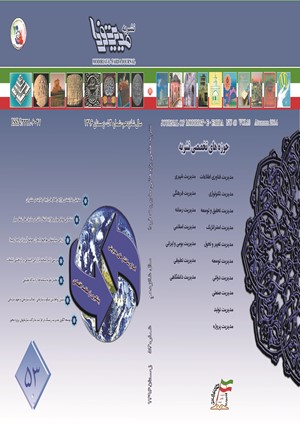اولویت بندی استراتژی ها با استفاده از رویکرد ترکیبی تجزیه و تحلیل سلسله مراتبی و کپراس فازی
محورهای موضوعی :
علی مروتی شریفآبادی
1
![]() ,
محمدمحسن خدائی میدانشاه
2
,
پوریا مالکی نژاد
3
,
میلاد حمزه نژادی
4
,
محمدمحسن خدائی میدانشاه
2
,
پوریا مالکی نژاد
3
,
میلاد حمزه نژادی
4
1 - دانشگاه یزد
2 - اقتصاد، مدیریت و حسابداری
3 - دانشکده اقتصاد، مدیریت و حسابدری، دانشگاه یزد
4 - دانشگاه یزد
کلید واژه: اولویت بندی استراتژی, اصل پارتو, کارت امتیازی متوازن پایدار, تجزیه و تحلیل سلسله مراتبی, کپراس فازی,
چکیده مقاله :
با توجه به رشد روز افزون سازمان ها در رقابت براي افزایش سهم بازار، ضرورت وجود برنامهريزي استراتژيك در سازمانها دو چندان مي شود كه بر این اساس توجه بسياري از محققين را جلب کرده است. هيچگاه تمامي گزينههاي استراتژيك به طور يكسان مورد توجه استراتژيست هاي سازمان قرار نخواهند گرفت. لذا میبایست بهترين گزينه ها را شناسايي و انتخاب نمود. در این پژوهش از ترکیب روش های کارت امتیازی متوازن پایدار، تجزیه و تحلیل سلسله مراتبی و کپراس فازی به عنوان یک فرآیند یکپارچه برای انتخاب بهترین استراتژی استفاده شده است. در ابتدا 33 شاخص پس از مطالعه ادبیات و مصاحبه با خبرگان یکی از شرکتهای کابینت سازی فهرست و با استفاده از تکنیک تحلیل سلسله مراتبی وزن دهی شدند و در گام بعدی با استفاده از نمودار پارتو غربال گردیدند. سپس 9 استراتژی موجود که حاصل تدوین تیم متخصص برنامه ریزی استراتژیک بود، توسط تکنیک کپراس فازی اولویت بندی گردید. در نهایت «استفاده از اقیانوس آبی برای شکل دهی یک سیستم بازاریابی اصولی و برندسازی» به عنوان مهمترین استراتژی شناخته شد و تصمیم گیرندگان بیشترین معیار بهینگی را به آن اختصاص دادند. با توجه به قرار داشتن شرکت در ابتدای مسیر و نیاز به شناخته شدن، استراتژی برندسازی مناسب خواهد بود، چرا که از دغدغه های اصلی شرکت های نوپا می باشد.
According to the organizations additive growth in competition for increasing market share, the necessity of strategic planning is increasing which accordingly has attracted plenty of researchers. All strategic alternatives are never taken into consideration equally by strategists. Therefore, best alternatives should be selected. In this research, an integrated process is used for selecting the best strategy which includes three approaches named Sustainable Balanced Score Card (SBSC), Analytic Hierarchy Process (AHP) and Fuzzy COmplex PRoportional ASsessment of alternative (COPRAS). Firstly, thirty-three criteria were extracted after studying literature review and interviewing most conscious experts from one of the cabinet making companies. Secondly, they are filtered by Pareto principle. Afterward, nine strategies which are strategic planning outcome, prioritized by COPRAS technique. At the end, "Using blue ocean in order to form a principled marketing and branding" identified as the most important strategy and decision makers allocated the highest utility degree to it. Due to this issue that the organization is at the beginning of the path and consequently should be recognized, "Using blue ocean in order to form a principled marketing and branding" will be an appropriate and suitable strategy because it is the main concern of the newly established and start-ups companies.


